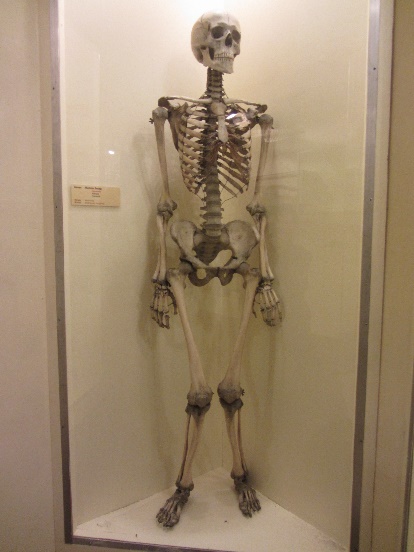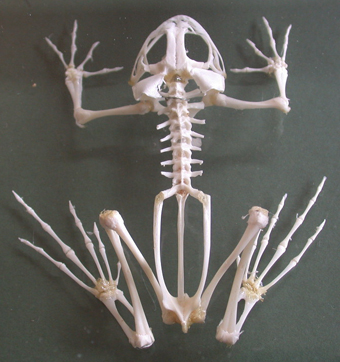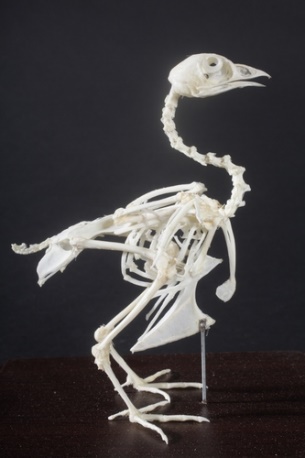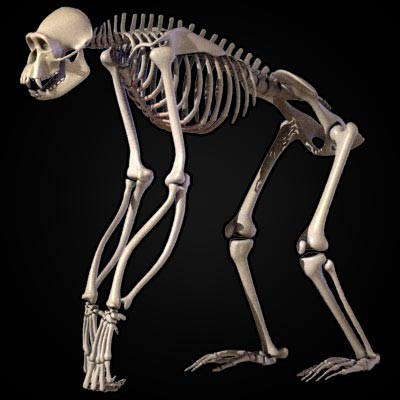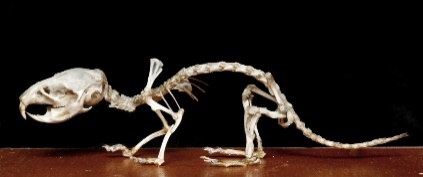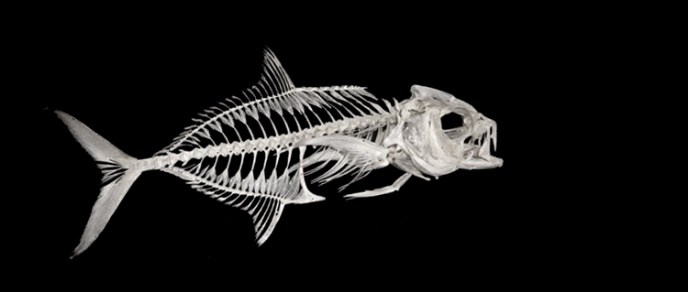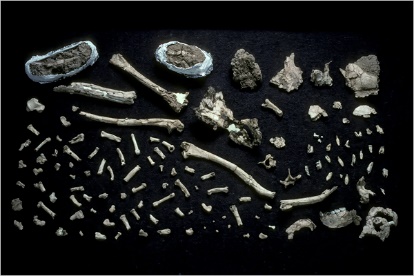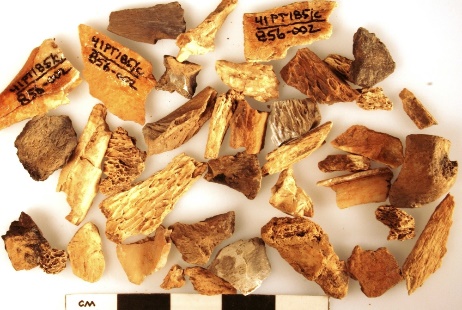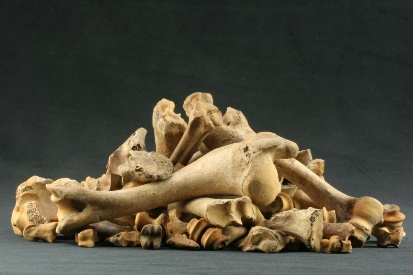According to the medical dictionary, bone is a hard and rigid connective tissue existing in most vertebrates, including mammals, fish, amphibians, reptiles, birds, primates, rodents and marsupials. Bone is one of the strongest biological materials in existence, particularly in terms of bearing weight and giving support to the movement of the body.
It is important for Forensic Anthropologists, Physical Anthropologists and Archaeologists to identify human bones and differentiate them from non-human bones, like artefacts and animal bones. For layman, this matter may sound trivial but for a scientist dealing with human bones, this question is very pertinent from the forensic viewpoint before embarking on any further investigation or research.
As shown in figure below, when the skeleton is in an intact condition, it is not difficult to identify the species of the bone. Unfortunately, in most cases, the bones are incomplete, fragmented, and even commingled (consisting more than one individual human skeleton or mixed with animal bones. Hence, identifying human bones is a critical step in every anthropological case.
|
Human skeleton |
Amphibian skeleton |
Bird skeleton |
|
Primate skeleton |
Rodent skeleton |
Fish skeleton |
|
Source: https://www.juntadeandalucia.es/averroes/centros-tic/04601622/helvia/aula/archivos/repositorio/0/109/html/21_animal_skeletons.html
|
||
There are various methods in differentiating human bones from non-human bones. Generally, it can be divided into three methods – macroscopic, microscopic and bio-chemical methods.
|
Source: http://www.texasbeyondhistory.net/landis/pipeline.html)
|
||
When bones are not catalogued systematically, this will cause difficulty in identifying human bones
Macroscopic Method
- Gross Visualization
In identifying human bones, it is crucial for the examiner to have access to a complete comparative skeleton, even in remote areas, to avoid confusion with animal bones, particularly primates. Dr. William Bass, a renowned anthropologist, emphasizes the importance of physically handling the bones, as illustrations or descriptions are not as reliable. It is also essential to familiarize oneself with various animal bones found in the local habitat to differentiate between human and non-human skeletal remains, as they can be quite similar. Subtle differences exist between human and animal bones due to fine morphological variations in bone features.
The book “The wild mammals of Missouri” by Schwartz and Schwartz, published in 1959, contains line drawings of animals and their bones, making it a valuable resource for inexperienced anthropologists in distinguishing human bones from non-human remains. With a good reference guide and visual examination, one can often determine macroscopically if bones are human without further investigation. For instance, differentiating between a child’s femur and an adult dog’s femur is relatively easy as the child’s femur will not have fused epiphyses.
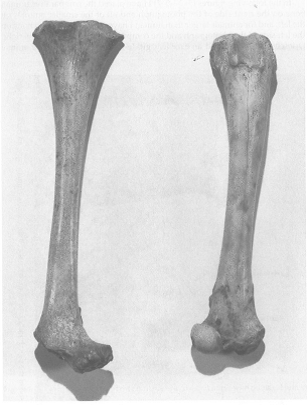
Femora of a 3-year-old child (180mm) (left) and an adult dog (166mm). They are of similar size, but the epiphyses of the adult dog have united whereas there are no fused epiphyses on the child’s femur. (Source: Robert, J., PPT: Forensic Anthropology, 2014) - Examination and Measurement
Detailed examination of bones, including size, shape, density, and surface structure using a magnifying glass, can reveal morphological features. Humans, being bipeds, have distinct characteristics such as a shorter ‘dish-shaped’ pelvis, foramen magnum at the base of the cranium, adaptations in hands and feet, and three curves in the spine.
Animals like horses, pigs, and cows have fused 3rd and 4th metacarpals due to their quadrupedal locomotion, which differs from humans. Human skeleton joints have smoother and rounder surfaces, while most animal joints are grooved with a central ridge and a better interlocking shape.
Long bones in humans differ significantly from animals, with thinner cortical shafts and lesser curvature in the femur and humerus. The femoral head angle in humans is typically greater than 90°, whereas animals usually have a 90° femoral head angle.
In some cases, bone measurements can provide clues about whether the bone is human or not. Books by Driesch and Moore-Jansen offer detailed measurements of both animal and human bones, serving as a reliable guide for differentiating bones when in doubt.
Microscopic Method
Microscopic examination is particularly employed when dealing with fragmented bones or remains. Trained bone histologists are proficient in conducting this examination. Julie Robert noted that various animal species, including humans, display distinct patterns of osteons in bone histology. Likewise, in their research paper, Mulhern and Ubelaker emphasized that the osteon banding present in human and non-human samples can be easily differentiated from each other.
Bio-chemical Method
Last but not least, DNA analysis is the definitive method in identifying human skeletonised remains. Humans possess a certain number and set of chromosomes with a genetic makeup which is totally different from any other living organism. Hence, by analysing the DNA profile, it can determine with a reasonable scientific certainty that the bone specimen is of human or non-human.
Differentiating Human Bones With Artefacts
Besides animal bones, artefacts are another common factor in causing confusion to the anthropologists in the identification of human bones. For example, chinawares, synthetic polymers, glasses andwood like twigs or tree branches can be deceiving and look almost similar to bones. Nevertheless, these artefacts can easily be singled out from actual bones by naked eye appearance as the surface textures and morphology are different from bone tissues. If one lack confidence in differentiating bones from artefacts, microscopic examination is a valuable tool to assist in differentiating between human / animal bones and non-living specimens as the latter will have no bone cells displayed.
References
-
- http://medical-dictionary.thefreedictionary.com/bone
- White, T.D., Folkens P.A., The Human Bone Manual, 2005
- Bass, W., Human Osteology: A laboratory and field manual 5th edition, 2005
- Robert, J., PPT: Forensic Anthropology, 2014
| Last Reviewed | : | February 2024 |
| Writer | : | Chong Sin Leng |
| Reviewer | : | Nurhusni binti Mohammad Room |


